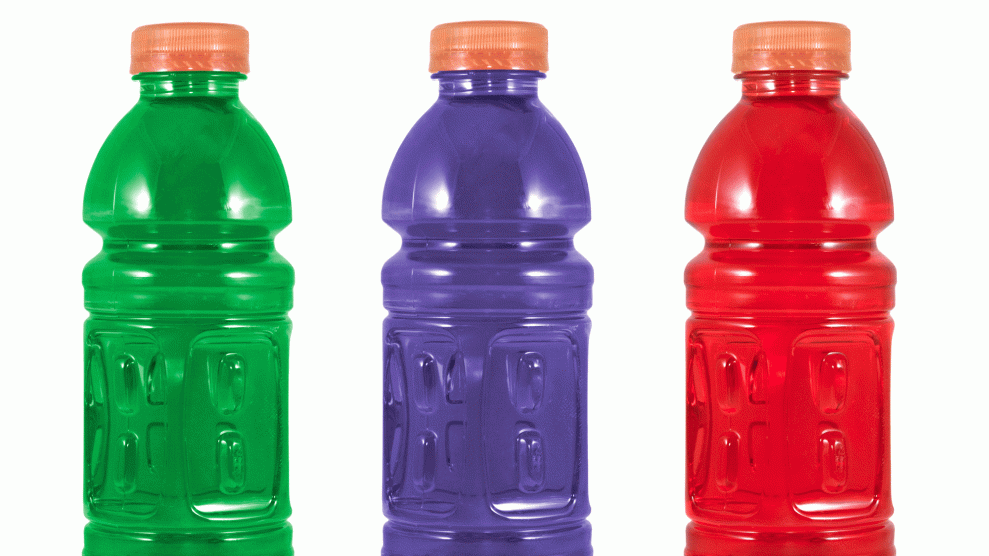
<p><a href="http://www.istockphoto.com/photo/example-of-different-colored-sports-drinks-gm164780165-16689822?st=_p_sportsdrink" target="_blank">Stratol</a>/iStock</p>
Sports drinks are an abomination. They’re packed with stuff you almost never need in beverage form, even after a vigorous workout: electrolytes. And with something you should probably avoid: sugar. But what if you could wave a magic wand and make these garishly colored beverages organic?
Junk-food giant PepsiCo, the corporate force behind the wildly successful Gatorade line of sports drinks, is betting that its new G Organic products will keep thirsty consumers coming back for more. Bloomberg reports that even though Gatorade owns a 70.1 percent share of the $842 million US sports drink market, its sales are under pressure from one-ingredient upstarts like coconut water (itself a dubious mass-market product, as Maddie Oatman has shown.)
According to Bloomberg, Power G will contain about the same number of calories per serving as regular Gatorade, subbing artificial colors and flavors for natural ones. Here’s what’s in old-school Gatorade Lemon-Lime:
WATER, SUGAR, DEXTROSE, CITRIC ACID, SALT, SODIUM CITRATE, MONOPOTASSIUM PHOSPHATE, GUM ARABIC, GLYCEROL ESTER OF ROSIN, NATURAL FLAVOR, YELLOW 5
According to a Pepsi spokesperson, G Organic contains these ingredients:
Water, organic cane sugar, citric acid, organic natural flavor, sea salt, sodium citrate, and potassium chloride.
I confess that sounds more appealing to me than the regular stuff. But here’s the thing. Organic cane sugar, in high concentrations, packs just as much of a blow to your liver as regular sugar does. Note that a single serving of regular Gatorade delivers 34 grams of sugar—exceeding the American Heart Association’s recommended maximum daily limit for kids and the World Health Organization’s recommendation for adults. If the organic product is similar in caloric levels, as Bloomberg reports, it will offer a similar jolt.
And the electrolytes G Organic offers will be just as useless as the ones in regular Gatorade. Turns out, your body does a great job balancing out electrolyte depletion with a normal diet.
In short, organic sports drinks are an abomination, too.













